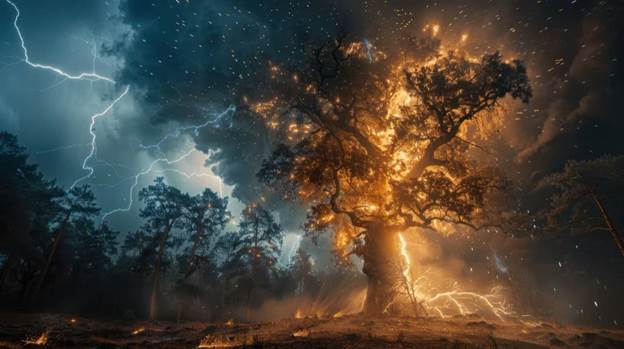Understanding the Phenomenon of Fire Whirls
A fire whirl is a rare but powerful natural occurrence that combines the destructive energy of fire with the dynamic motion of air. When intense heat from a wildfire or urban fire rises rapidly, it creates strong upward convection currents. These currents begin to rotate due to wind shear or topographical influence, producing a swirling column of flame a fire whirl. This phenomenon exemplifies how combustion and convection interact in extreme environmental conditions, amplifying both heat intensity and fire spread.
Table of Contents
Fire whirls have fascinated and terrified observers for centuries, appearing in forest fires, volcanic eruptions, and even industrial accidents. This article explores the science behind combustion and convection, their role in fire whirl formation, and why understanding this process is essential for fire safety and climate studies.

The Science Behind Fire Whirls
The Role of Combustion in Fire Whirl Formation
At the heart of every fire whirl lies combustion, the chemical reaction that releases heat and light. When organic materials like grass, wood, or buildings burn, they emit gases and heat. If these gases rise rapidly, they form a vertical column of hot air. This upward movement creates a low-pressure zone at the base, drawing in more air to sustain combustion.
In a normal fire, this process disperses heat evenly, but under specific conditions like uneven terrain or shifting winds the airflow begins to rotate. This rotational convection transforms a simple flame into a whirling vortex of fire, intensifying the burning process and generating temperatures that can exceed 2,000°F.
Convection: The Driving Force Behind Fire Whirls
Convection is the upward movement of heated air, and it plays a crucial role in the birth of a fire whirl. When the hot air rises, it pulls cooler air from surrounding areas, feeding the fire with fresh oxygen. This continuous cycle increases heat output and promotes vertical instability.
In wildfire zones, uneven ground or obstacles like cliffs and buildings can redirect airflow, creating spinning eddies. When these eddies interact with the rising heat, they form rotating columns the foundation of a fire whirl. The stronger the convection, the taller and more violent the vortex becomes.
Environmental Conditions That Trigger Fire Whirls
Topography and Wind Interactions
Certain landscapes increase the likelihood of fire whirl formation. Valleys, ridges, and canyon walls can channel wind patterns in circular paths. As the heat from combustion rises, the wind flow interacts with it, creating swirling air currents. These combined forces generate a self-sustaining vortex that can travel across the ground or rise hundreds of meters high.
Moisture, Temperature, and Fuel
A fire whirl thrives in dry environments where vegetation, debris, or fuel loads are abundant. High temperatures and low humidity accelerate evaporation and drying, increasing the volatility of combustibles. When ignition occurs, the fire burns hotter and faster, enhancing convection and rotation.
Key contributing factors include:
•Dry fuel such as brush or fallen leaves
•Strong but uneven surface winds
•Steep slopes or heat-reflecting surfaces
•Extreme ambient temperatures
Fire Whirls in Nature and Human Environments
Wildfire Fire Whirls
The most common examples occur during large-scale wildfires. In 2018, the Carr Fire in California produced a fire tornado a massive fire whirl with winds over 230 km/h. The combination of intense heat, high winds, and unstable atmospheric conditions led to one of the most destructive vortexes ever recorded.
Urban and Industrial Fire Whirls
Fire whirls can also appear in cities or industrial zones. During the 1945 Tokyo firebombing, intense urban fires created massive whirlwinds that destroyed entire blocks. Modern research shows that confined heat, fuel sources, and strong drafts inside buildings can recreate similar miniature fire vortices.
Effects of Combustion and Convection on Fire Behavior
Increased Temperature and Energy Release
A fire whirl concentrates energy within its rotating core. The combined effects of combustion and convection increase oxygen intake, allowing flames to burn hotter and faster. This leads to:
•Enhanced flame height and intensity
•Rapid horizontal fire spread
•Increased destruction of vegetation and property
Spread of Embers and Secondary Ignition
Rotating air currents can lift burning debris high into the atmosphere. These embers are transported far beyond the initial fire zone, causing spot fires that make containment efforts extremely challenging.

Scientific Importance and Research Implications
Studying Fire Dynamics
Researchers use controlled fire whirl experiments to study combustion efficiency and atmospheric interactions. These studies help improve predictive wildfire models and aid in designing safer firefighting strategies.
Climate and Environmental Impact
Fire whirls influence local air quality and atmospheric chemistry. They emit massive amounts of carbon dioxide, soot, and particulates, which contribute to climate change and air pollution. Understanding these processes helps scientists evaluate the long-term environmental impacts of extreme fire events.
Challenges in Managing Fire Whirls
Despite advances in meteorology and fire modeling, predicting fire whirl formation remains difficult. The chaotic interaction of heat, terrain, and wind creates unpredictable results. Firefighters face several challenges, including:
•Limited visibility due to smoke
•Sudden flame acceleration
•Dangerous wind shifts
•High radiant heat exposure
Advanced satellite imaging and AI-driven fire simulation models are helping authorities anticipate conditions conducive to fire whirl development, improving evacuation and response planning.
Conclusion
A fire whirl demonstrates how combustion and convection combine to produce one of nature’s most intense and mesmerizing phenomena. These fiery vortices reveal the raw power of energy transfer in the atmosphere, reminding us of the delicate balance between natural forces and human safety. By understanding their underlying mechanisms, scientists and policymakers can better predict and mitigate wildfire hazards. To stay informed about evolving wildfire science, continue exploring research on fire dynamics and atmospheric behavior.